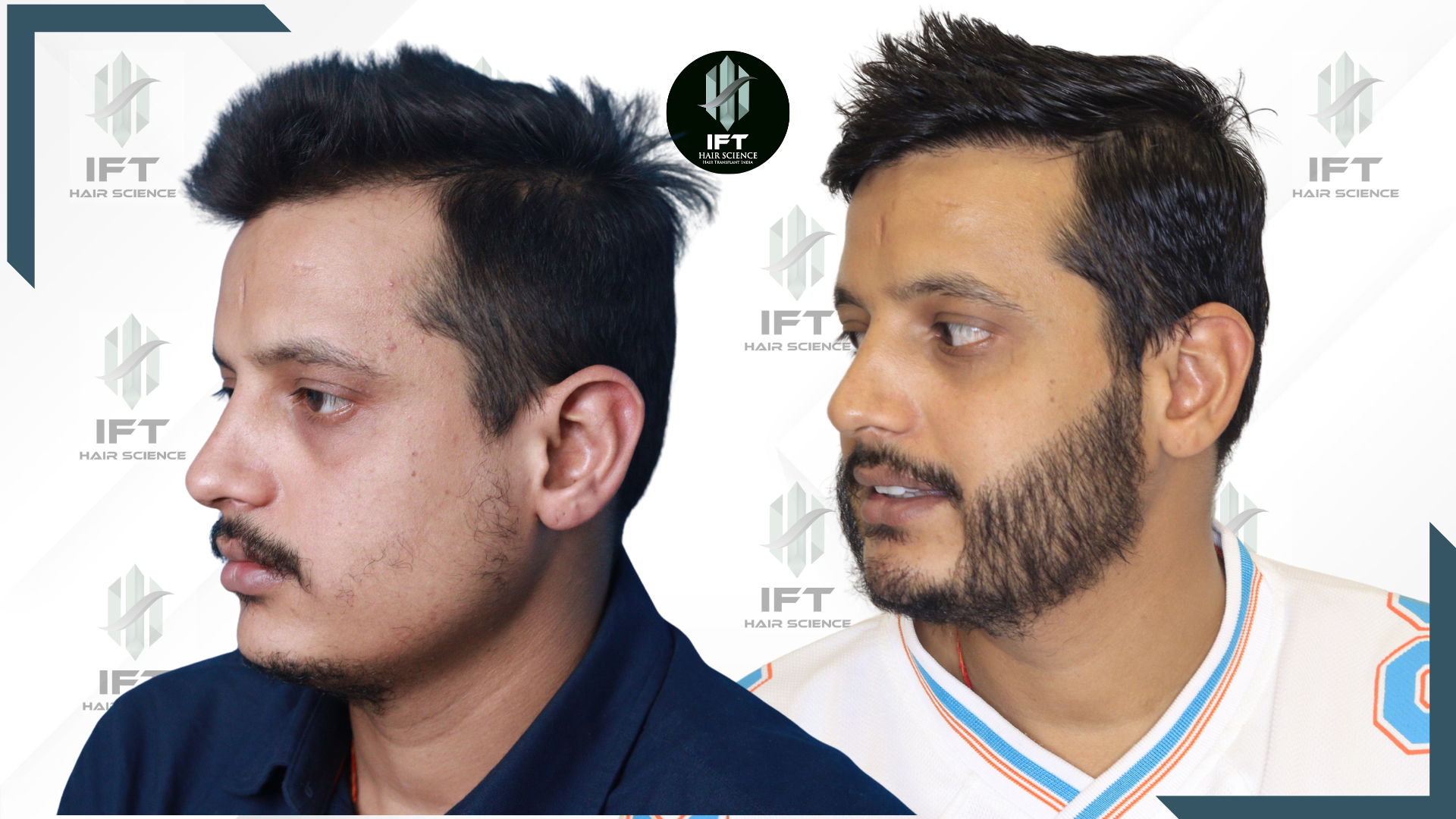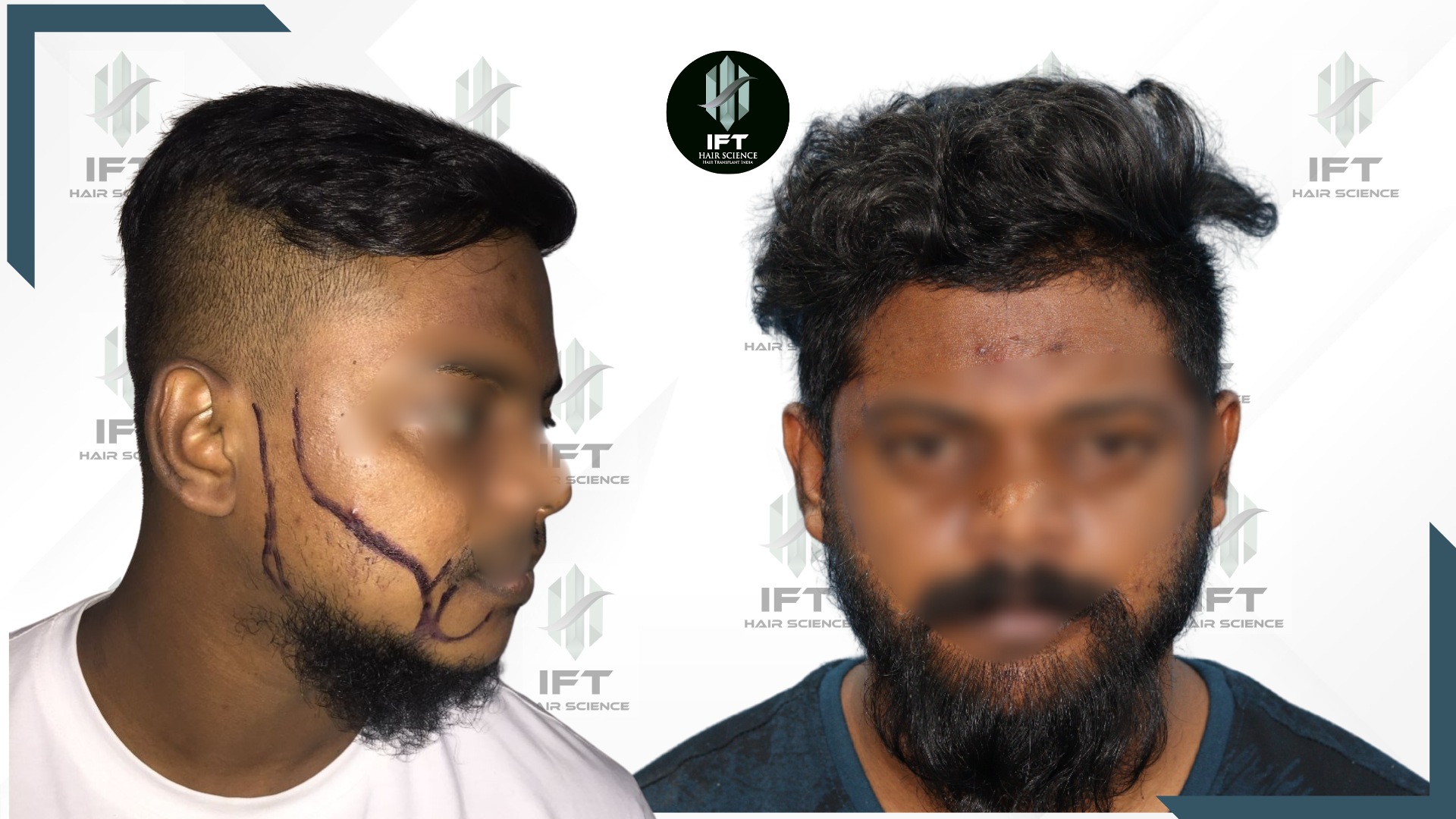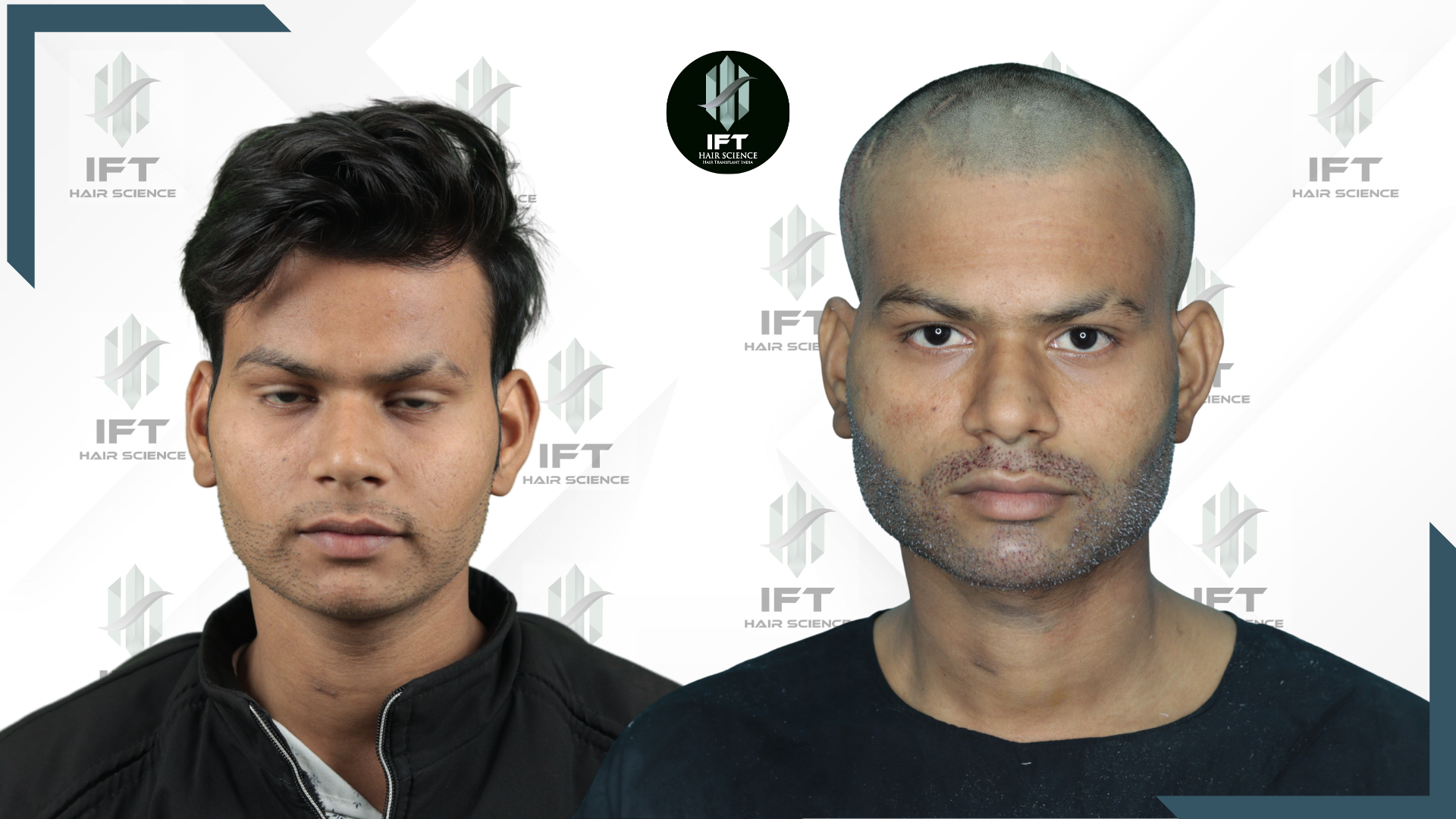
Beard Hair Transplant in India
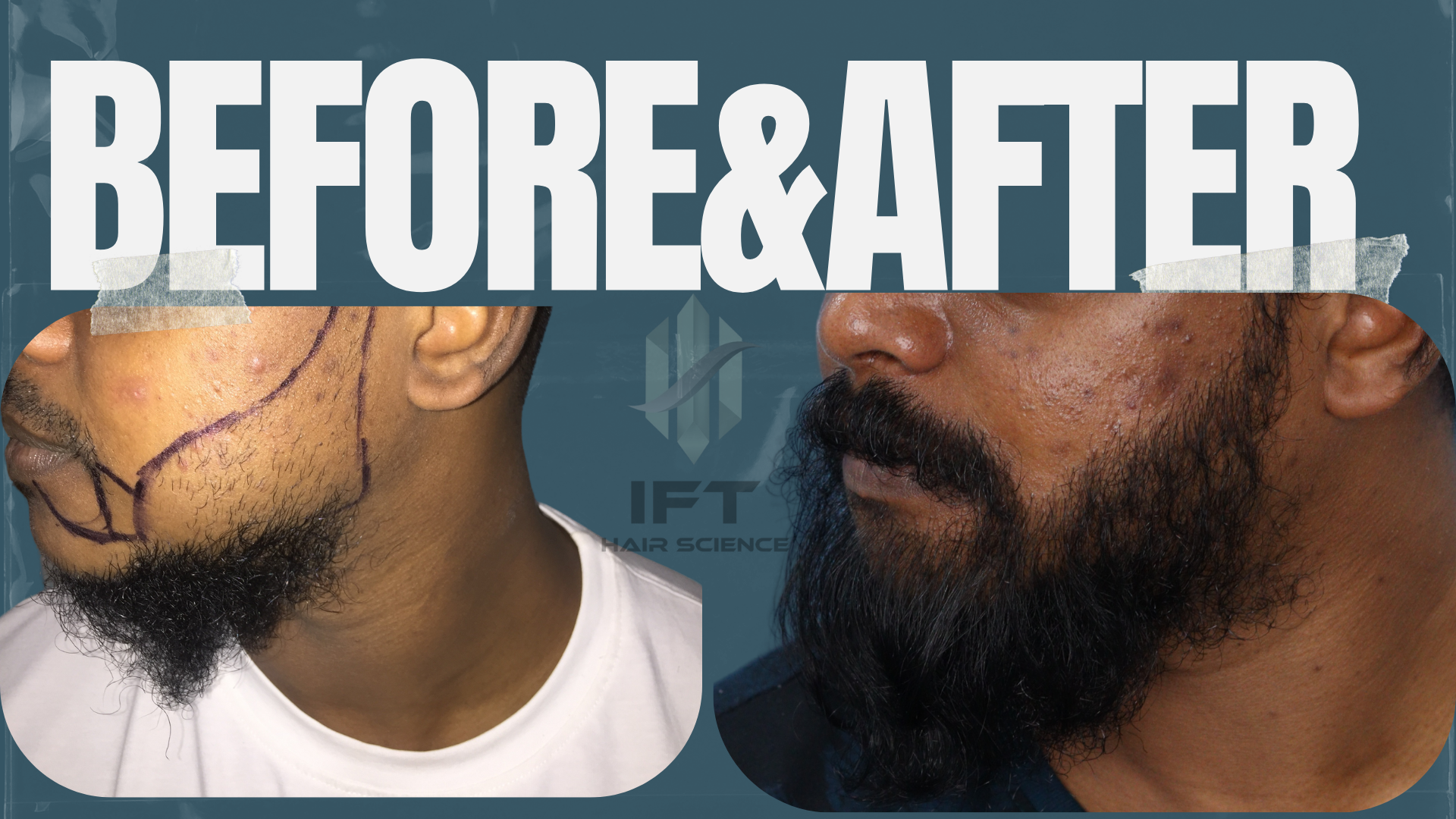
A well-defined beard can dramatically enhance a man’s facial aesthetics, projecting masculinity, maturity, and style. For many, however, genetics, hormonal imbalances, or scarring prevent natural beard growth, leading to patchy or uneven facial hair. This can take a toll on confidence and self-image. But with advancements in medical science, especially in hair restoration techniques, men can now achieve the facial hair they’ve always desired.
Enter the world of beard hair transplant in India—a transformative procedure that blends precision, personalization, and permanence. At the forefront of this innovation is IFT Hair Science, where tailored solutions meet modern technology to deliver results that look and feel entirely natural.
IFT CLINIC, led by an acclaimed Hair Transplant Surgeon in India, shares:

“In the last decade, the demand for facial hair restoration has surged by over 35% globally. Indian men, too, are increasingly seeking this transformation not just for cosmetic enhancement, but for personal identity. At IFT Hair Science, we combine artistic detail with surgical precision to deliver results that align with the patient’s facial structure and preferences.”
What Is a Beard Hair Transplant?
Think of it as a facial makeover that uses your own hair to craft a fuller, well-contoured beard. A beard hair transplant is a minimally invasive surgical procedure where hair follicles—usually extracted from the back of the scalp—are transplanted into areas of the face lacking facial hair.
Here’s what makes it stand out:
Autologous procedure: Uses your own hair, minimizing rejection risk.
Precision placement: Each follicle is implanted at an angle that mimics natural growth.
Custom design: Patients can choose beard shapes—whether a full beard, goatee, or defined mustache.
Ideal Candidate for Beard Transplant
Beard transplants aren’t one-size-fits-all. Here’s who might benefit the most:
Men with patchy or thin beard growth
Due to genetics or hormonal reasons, some men naturally lack density in the beard area.
Individuals with scars on the face
Hair follicles can be used to cover facial scars resulting from injuries, burns, or acne.
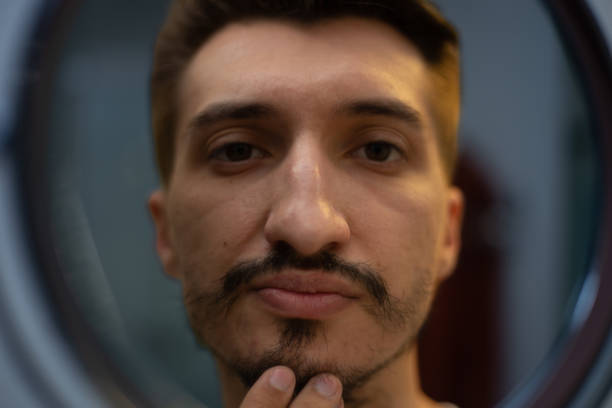
Transgender individuals in transition
Many opt for beard transplants as part of their gender affirmation journey.
Those who desire a specific beard style
Some choose transplants purely for aesthetics—be it to fill gaps or craft a bold new beard line.
IFT Hair Science, India, explains:
“Many believe beard transplants are only for those without any facial hair. In reality, even men with existing beards can enhance shape, symmetry, or density. During our consultations, we map the facial features to ensure results blend seamlessly with natural hair patterns.”
Beard Transplant Procedure
Consultation & Planning
A detailed analysis of facial structure, hair texture, and growth patterns helps design the ideal beard.
Donor Area Selection
Typically, the back of the scalp is chosen for its dense, permanent hair follicles.
Extraction via FUE
Follicular Unit Extraction (FUE) is used to harvest individual hair follicles—minimally invasive and leaves no linear scar.
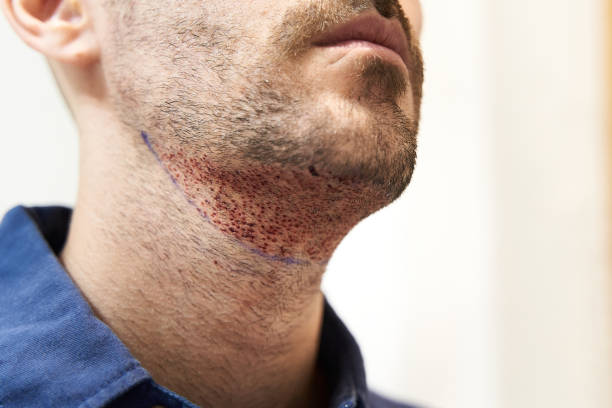
Graft Preparation
Extracted follicles are cleaned, sorted, and prepared for implantation.
Implantation into Beard Area
Hair follicles are implanted using precision tools at the right depth and angle to mimic natural beard growth.
Post-Procedure Care
Mild swelling or redness subsides within a few days. A soft beard may start appearing in 3-4 months.
What Areas of the Face Can Be Targeted?
Cheeks: Perfect for fuller sideburns or connecting areas.
Chin: Helps define the lower face and jawline.
Mustache Area: Essential for a complete beard appearance.
Jawline & Neck: Enhances contouring and masculinity.
Sideburns: Fill in thinning patches or connect to the beard.
At IFT Hair Science, we specialize in restoring hair not just on the face, but also on the scalp. If you’re experiencing hair loss at the crown, our can help you regain natural hair density.
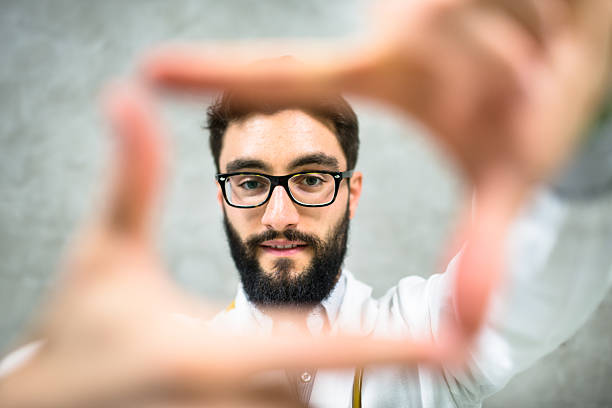
What to Expect After the Procedure
Initial shedding: Transplanted hair falls off in 2–3 weeks—this is normal.
Regrowth begins: New hair growth starts around the 3-month mark.
Full results: Typically visible by 9–12 months.
“Patience is key. Most clients begin to see promising results in the first few months, but the real transformation happens over time. Proper care and follow-ups accelerate recovery and ensure optimal outcomes.”
Benefits of Beard Hair Transplant
Natural Appearance
The implanted hair behaves just like natural facial hair—can be shaved, styled, and trimmed.
Permanent Solution
Once established, the beard doesn’t shed or fade with time.
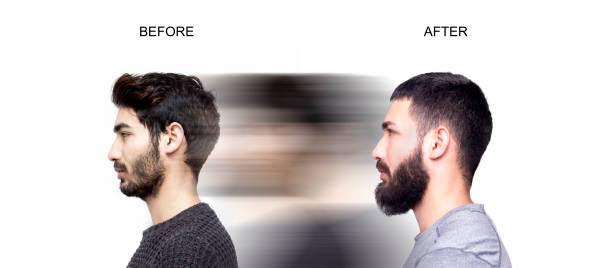
Custom Styling
Design your beard—whether classic or trendy—to match your personality.
Scar Coverage
Ideal for concealing facial scars that hinder beard growth.
Boost in Confidence
A fuller, well-shaped beard can enhance overall appearance and self-assurance.
Potential Risks of Beard Hair Transplant
Infection: Rare, but possible if post-care isn’t followed correctly.
Swelling/Redness: Temporary and usually resolves in a few days.
Uneven Growth: May require minor touch-ups to achieve symmetry.
Itching or Scabbing: Common during healing, manageable with topical care.
“Post-operative care determines at least 40% of your final results. Avoid scratching, follow the hygiene routine, and attend scheduled check-ups. Most side effects are temporary and manageable with proper guidance.”
Beard Hair Transplant Cost in India
Number of grafts required
More grafts mean higher cost, especially for full beard coverage.
Technique used
FUE is more refined and typically costlier than traditional methods.
Surgeon’s expertise
Skilled, experienced professionals may charge more, but ensure better outcomes.
Clinic infrastructure
Modern tools and sterile environments come with an added price—but it’s worth it.
Location of the clinic
Urban centers may have slightly higher charges due to overheads.
Tips for a Successful Beard Transplant Experience
Do your research: Choose a clinic with proven experience in facial hair transplants.
Follow pre-op instructions: Avoid smoking, alcohol, and certain medications as advised.
Commit to aftercare: Stick to washing protocols, avoid touching the grafts, and attend follow-ups.
Be patient: Full results take time—rushing the process or expecting instant density can lead to dissatisfaction.
Communicate expectations: Be clear with your surgeon about your desired beard style.
Beard transplant before and after india
Why Choose IFT for Your Beard Transplant?
Doctor-led expertise: With IFT skilled doctors at the helm, patients benefit from years of precision-led procedures.
Customized approach: Each transplant is designed around the individual’s facial anatomy and preferences.
Cutting-edge technology: We use advanced FUE methods for minimal downtime and optimal density.
High success rate: Consistently delivering natural-looking, long-lasting results.
IFT doctors an expert in hair transplant techniques, says:
“At IFT Hair Science, we don’t just restore hair—we sculpt confidence. Every follicle is placed with intent, ensuring the outcome aligns with our patient’s vision and natural contours. That’s the difference of experience combined with empathy.”



